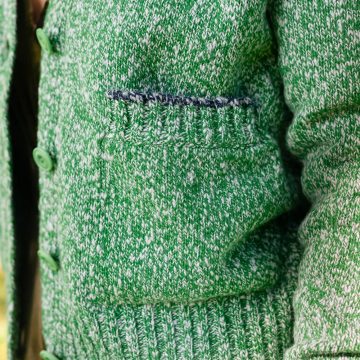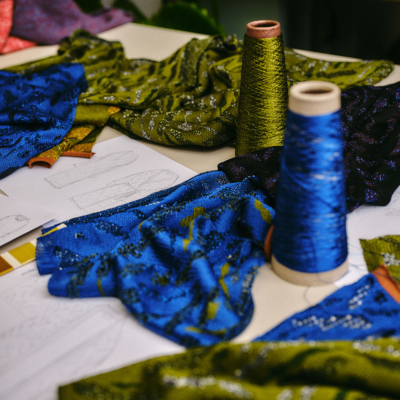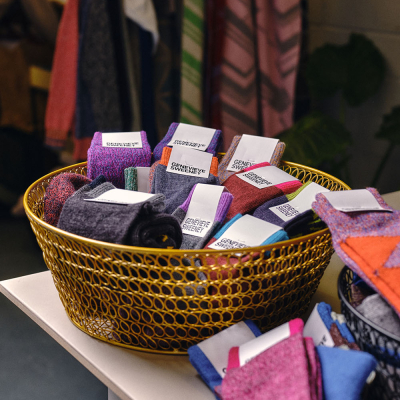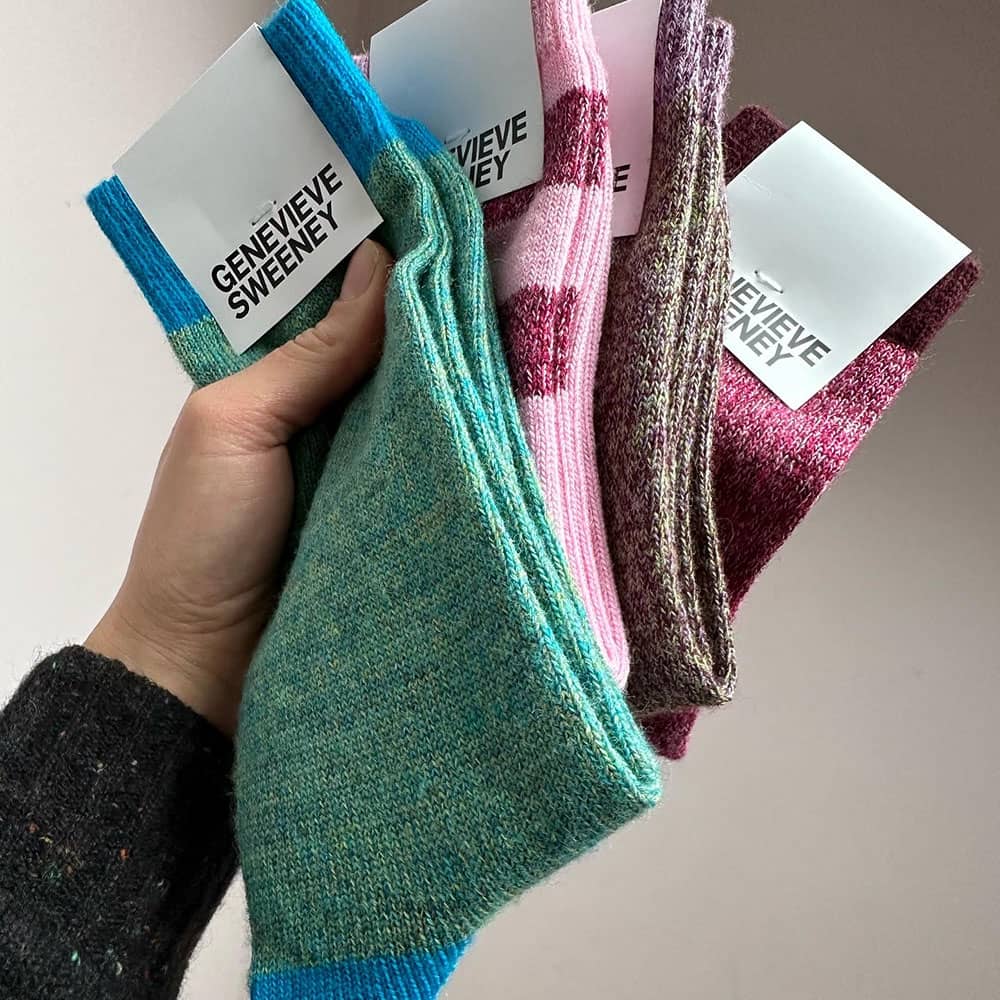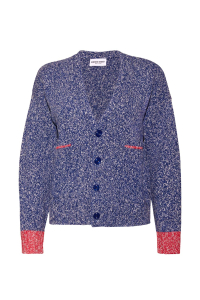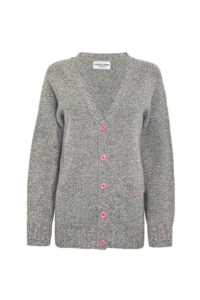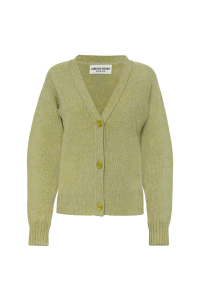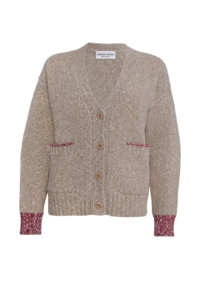GS Journal
Innovative Knitwear | Cotton Spinning
Sustainability is always in the fore front of my mind when designing a collection. When I worked for international brands that manufactured across the world I became very aware of the carbon foot print of a garment, from the pollution of water, the wastage of fabrics to the footprint of postage when sending prototypes from an office in London to Hong Kong. This influenced my decision to manufacture within the UK as I could clearly see how alternative processes and manufacturing near by would greatly reduce my carbon footprint.
At the start of launching Genevieve Sweeney, I stayed away from cotton as its manufacturing process is one of the fashion industries most environmentally harming natural fibres, this is because it requires a substantial amount of water, chemicals, energy and land to process.
However, during a yarn meeting I met the owner of a cotton spinning and dying factory in Italy and he invited me to see how his cotton was produced and to show how the fashion industry can develop to become sustainable.
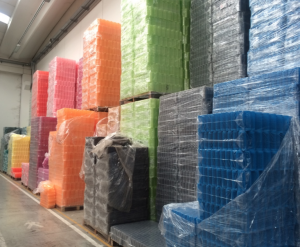
Colourful Cones ready for Cotton spinning
My first meeting was at a spinning factory near Bergamo, Northern Italy where the cotton fibre is spun into a variety of counts and weights. Every cone of cotton is quality checked and certified, the mill was proud to work with only organic and recycled cotton to create a high-quality product.
However, this was not what amazed me the most, the factory was state of the art, clinical and solely run by solar panels! A huge monitor on the wall stated the energy collected and used throughout the day and month. A huge positive step to reusable energy and making the most of living in a sunny climate.
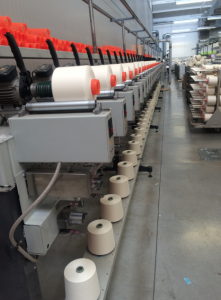
Spinning Cotton
The second process that amazed me was the way that they gas the yarn, to give you a clean cotton finish. The yarn is threaded through a spinning machine and the fibre goes through a flame (like a bunsen burner) at a high speed, this process is so quick that it doesn’t burn the fibre but removes the excess fibres. What happens to the fibres, well, the mill has an inbuilt filter system that collects all the fibres around the machines, in the air and on the floor. Not only does this keep the working environment clean and dust free, the collected fibres are then turned into paper for office use…anyone who has knitted with mohair will know, you will be sneezing mohair for days after if the fibres become air born.
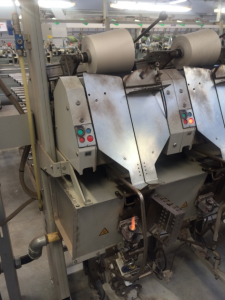
After the cotton is spun into a desirable weight, the coned cotton is then taken to a sister factory where it is dyed in hundreds of vivid colours, only organic manufacturing processes are used to reduce or eliminate hazardous chemicals.
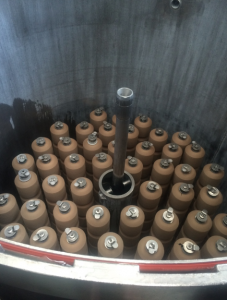
Coned Cotton ready to be dyed
Once the yarn has been dyed with a harmless dye, the leftover water is collected into an outside tank, where they introduce organic bacteria that eat the dye. The water is then transferred to a second tank where the oxygen level is slightly lower so the bacteria sink to the bottom and is transferred back into the first tank, then the clean water is taken into a third tank which is used for local agriculture and reused in the factory.
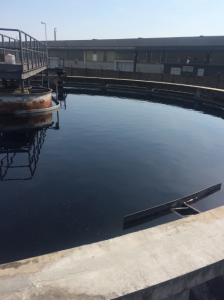
Water tank filled with organic bacteria that eats the dye
The recycling of the water and use of eco materials greatly reduces the negative impact on the environment and helps local agriculture with the availability of clean fresh water. It is so important to promote awareness of sustainable manufacturing processes to educate and encourage others to take a similar step in investing into cleaner production practices and use low environmental impact materials.
This mill has taken a huge step forward for a more sustainable management of textile manufacturing, small changes (yes costly at first to install solar panels, but as they live in an incredibly sunny country the electric bill will be minimal) but what an inspirational trip which truly gave me a lot of respect and love for cotton and the want to support and promote this incredible mill.
So which garments do I knit these yarns with…. our sparkly cotton socks and the Carlotta jumper.
Recent Posts
GS Collections
GS Sock Subscription
Subscribe and each month you'll receive a surprise pair of socks showcasing Genevieve's signature blend of premium yarns and contemporary patterns in seasonal, statement colours.



